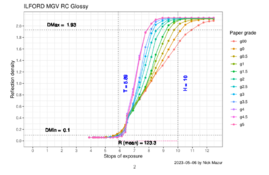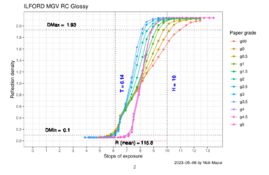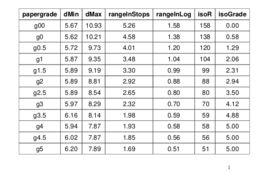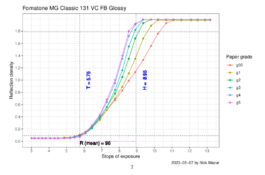I read that Ilford filters 4-5 should be used with double exposure times. So when doing, for example, a 8s exposure should I split 4s of grade 5 or 8s of grade 5 with 4s of 0? If I want to get 2.5 contrast. I worked with the first variant (same for all) and didn't experience underexposed prints.
I bought the filters used, they look good not faded... Did the Ilford always have this rule for exposure times between the filters (4-5 double time, rest all the same). Or they had different rules before?
My filters are the version with 0-5, no 00
Thanks
0, 1/2, 1 etc...
I bought the filters used, they look good not faded... Did the Ilford always have this rule for exposure times between the filters (4-5 double time, rest all the same). Or they had different rules before?
My filters are the version with 0-5, no 00
Thanks
0, 1/2, 1 etc...
Last edited:







 Based on your explanation, aparat, can you say what this tells you to do in terms of exposure when using grades 4-5 filters, assuming this explanation is not totally obvious in your explanation. Have you ascertained by means of two prints what the difference is and can you show us?
Based on your explanation, aparat, can you say what this tells you to do in terms of exposure when using grades 4-5 filters, assuming this explanation is not totally obvious in your explanation. Have you ascertained by means of two prints what the difference is and can you show us? .
.

